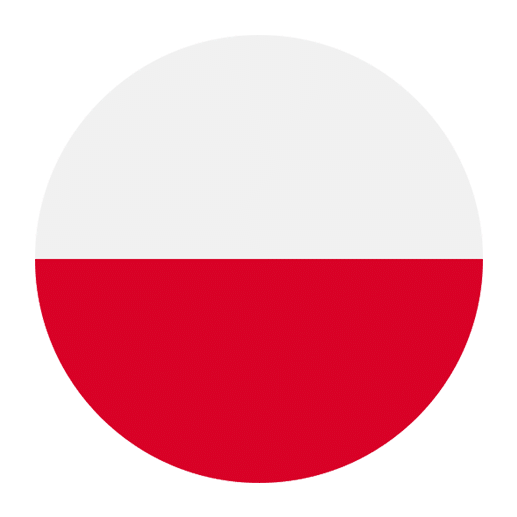Poland, a country rich in history and culture, has a language that mirrors its unique identity. Polish, or “język polski,” is more than just a medium of communication; it’s a gateway into the heart of Polish traditions, customs, and ways of thinking. For English speakers, learning Polish offers a profound insight into a culture that has withstood numerous trials and tribulations while maintaining its distinctiveness.
The Historical Context of the Polish Language
Polish is a West Slavic language, closely related to Czech and Slovak, and part of the broader Indo-European language family. Its development has been shaped by Poland’s tumultuous history, including invasions, partitions, and occupations. These historical events have left an indelible mark on the language, reflected in loanwords, idiomatic expressions, and even grammatical structures.
The Influence of Latin and Church
The Polish language has been significantly influenced by Latin, primarily due to the Catholic Church’s dominance in Polish culture. Latin was the language of the educated elite and the clergy. As a result, many Latin terms have found their way into Polish, especially in the realms of science, law, and religion. Words like “szkoła” (school) and “kościół” (church) are just a couple of examples of Latin influence.
Partition and Borrowed Words
During the late 18th century, Poland was partitioned by Russia, Prussia, and Austria, leading to over a century of foreign rule. This period introduced numerous loanwords into Polish from German, Russian, and French. For instance, the German word “handel” (trade) became “handel” in Polish, while the French “pompa” (pomp) was adopted directly. These loanwords are a testament to Poland’s complex political history.
Polish Pronunciation and Phonetics
For English speakers, Polish pronunciation can initially seem daunting. However, understanding the phonetic system can provide valuable insights into the culture and mindset of Polish speakers.
Consonant Clusters and Soft Consonants
One of the distinctive features of Polish is its use of consonant clusters, which can be challenging for English speakers. Words like “szczęście” (happiness) and “przedszkole” (kindergarten) exemplify this. These clusters often reflect the compact and resilient nature of the Polish people, who have historically had to band together in difficult times.
Polish also distinguishes between hard and soft consonants. For example, the letter “c” can be hard, as in “co” (what), or soft, as in “ćma” (moth). This distinction adds a layer of nuance to the language, mirroring the subtleties in Polish social interactions.
Vowel Harmony
Polish vowels are relatively straightforward for English speakers, but vowel harmony plays a critical role. Vowel harmony refers to the way vowels within a word harmonize to create a pleasing sound. This phonetic feature is indicative of the Polish appreciation for balance and aesthetics, values that are deeply ingrained in Polish art, music, and literature.
Grammar as a Cultural Lens
Polish grammar, with its cases, genders, and aspectual distinctions, offers a window into the cultural priorities and social structures of Poland.
Cases and Social Hierarchy
Polish uses seven cases: nominative, genitive, dative, accusative, instrumental, locative, and vocative. Each case changes the form of a noun, pronoun, or adjective depending on its role in the sentence. This grammatical complexity reflects the Polish emphasis on precision and clarity in communication.
Moreover, the use of cases can indicate social hierarchy and respect. For instance, the vocative case is often used to address someone directly and respectfully, especially in formal contexts. This mirrors the Polish cultural value of showing respect to others, particularly elders and authority figures.
Gender and Familial Roles
Polish nouns are classified into three genders: masculine, feminine, and neuter. This gender system extends to adjectives and verbs, affecting their forms as well. The importance of gender in grammar mirrors the traditional roles within Polish families and society, where gender has historically played a significant role in determining one’s duties and responsibilities.
Aspect and Perception of Time
Polish verbs are marked for aspect, distinguishing between actions that are completed (perfective) and those that are ongoing (imperfective). This aspectual distinction reveals a cultural preoccupation with the nature of actions and their outcomes. It reflects a mindset that values both the process and the completion of tasks, indicative of a culture that has had to be meticulous and resilient to survive historical adversities.
Idiomatic Expressions and Cultural Insights
Idiomatic expressions are a treasure trove of cultural insights. Polish idioms often encapsulate the wisdom, humor, and values of the Polish people.
Proverbs and Resilience
Polish proverbs, or “przysłowia,” often emphasize resilience and practicality. For example, “Nie ma tego złego, co by na dobre nie wyszło” translates to “There is no bad that wouldn’t turn out good.” This proverb reflects the Polish ability to find the silver lining in difficult situations, a trait honed through centuries of political and social upheaval.
Humor and Irony
Polish humor often relies on irony and wordplay. An example is the idiom “mieć muchy w nosie,” which literally means “to have flies in one’s nose” but is used to describe someone who is in a bad mood. This playful use of language reveals the Polish tendency to approach life’s difficulties with a sense of humor and irony.
Language and Polish Festivals
Polish festivals and holidays provide a rich context for understanding how language and culture intertwine.
Christmas and Easter
Christmas (Boże Narodzenie) and Easter (Wielkanoc) are the two most significant holidays in Poland, deeply rooted in Catholic traditions. During these times, specific greetings and phrases are used that reflect the cultural and religious significance of the events. For example, during Christmas, people often say “Wesołych Świąt” (Merry Christmas), and during Easter, “Wesołego Alleluja” (Happy Easter). These phrases are more than just greetings; they are expressions of communal joy and religious devotion.
Traditional Songs and Dances
Polish traditional music and dances, such as the Polonaise and Mazurka, often feature lyrics that tell stories of Polish history and folklore. Learning these songs can provide language learners with a deeper understanding of Polish cultural narratives and values. The lyrics often contain archaic words and expressions, offering a glimpse into the historical evolution of the Polish language.
The Role of Literature in Polish Culture
Polish literature is a cornerstone of the nation’s cultural heritage, with works that have shaped and been shaped by the Polish language.
Classical Literature
Authors like Adam Mickiewicz, Henryk Sienkiewicz, and Wisława Szymborska have made significant contributions to Polish literature. Mickiewicz’s “Pan Tadeusz,” a national epic, is a rich source of archaic language and historical references. Sienkiewicz’s “Quo Vadis” and “With Fire and Sword” offer insights into Polish history and national identity. Szymborska’s poetry, with its profound simplicity, often explores universal themes through the lens of Polish experience.
Contemporary Literature
Contemporary Polish literature continues to explore and challenge cultural norms. Authors like Olga Tokarczuk, who won the Nobel Prize in Literature, delve into themes of identity, history, and the human condition. Reading contemporary works can provide language learners with a modern perspective on Polish culture and societal changes.
Polish Language in Media and Pop Culture
Media and pop culture are dynamic arenas where the Polish language is continually evolving.
Television and Film
Polish cinema and television offer a rich array of language learning opportunities. Films by directors like Andrzej Wajda and Krzysztof Kieślowski are not only cinematic masterpieces but also linguistic treasures. Watching Polish movies with subtitles can help learners understand contemporary spoken Polish, idiomatic expressions, and cultural references.
Music and Podcasts
Polish music spans genres from traditional folk to modern pop and hip-hop. Listening to Polish music can improve language skills and provide insights into contemporary Polish culture. Additionally, Polish podcasts on various topics, from history to technology, offer an immersive way to practice listening and comprehension.
Practical Tips for Learning Polish
Learning Polish can be a rewarding but challenging endeavor. Here are some practical tips to help you on your journey.
Immerse Yourself
Immersion is key to language acquisition. Surround yourself with Polish media, join language exchange groups, and practice speaking with native speakers as much as possible. The more you immerse yourself in the language, the more natural it will become.
Focus on Pronunciation
Polish pronunciation can be tricky, especially the consonant clusters and soft consonants. Spend time mastering the sounds and practicing with native speakers. Use language learning apps that focus on pronunciation to hone your skills.
Learn the Cases
Understanding the seven cases in Polish is crucial for proper communication. Practice by using flashcards, doing exercises, and applying the cases in real-life situations. Over time, the cases will become second nature.
Embrace the Culture
Understanding Polish culture will enhance your language learning experience. Participate in Polish cultural events, read Polish literature, and learn about Polish history and traditions. The more you understand the culture, the more meaningful your language learning will be.
Conclusion
Understanding Polish culture through language is a journey that offers rich rewards. The Polish language, with its unique phonetic, grammatical, and idiomatic features, provides a window into the heart of Poland’s history, values, and social structures. By immersing yourself in the language and culture, you can gain a deeper appreciation for the resilience, humor, and beauty that define Polish identity. Whether you’re learning Polish for personal enrichment, travel, or connecting with Polish heritage, embracing the language will open doors to new experiences and insights into this fascinating culture.

